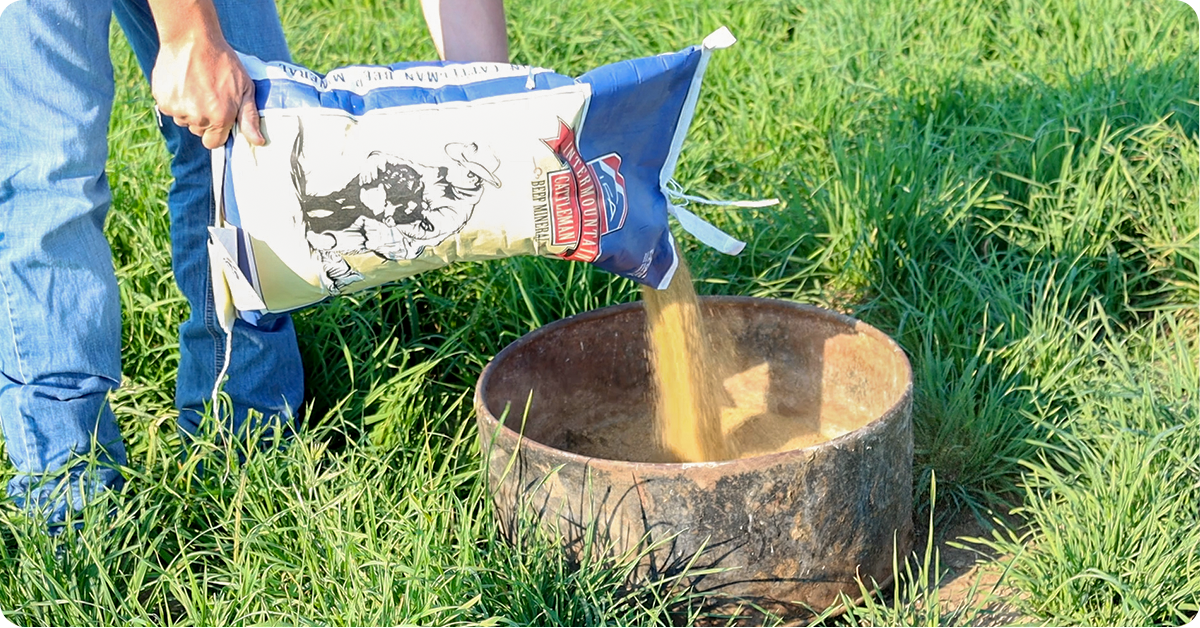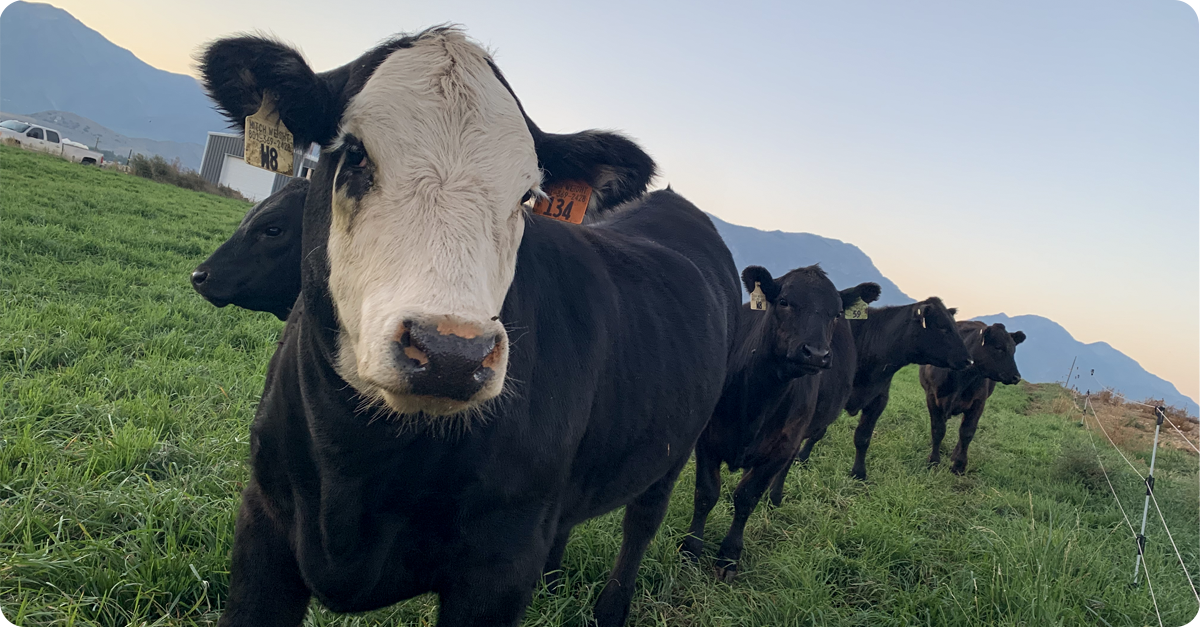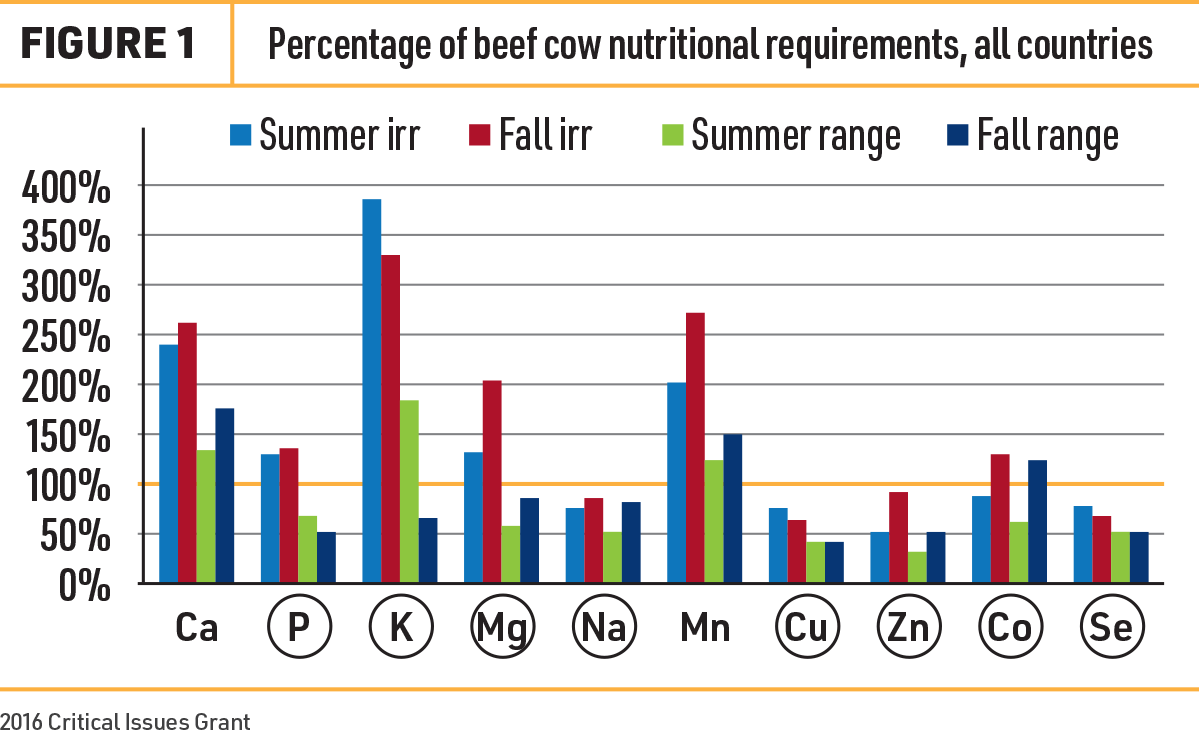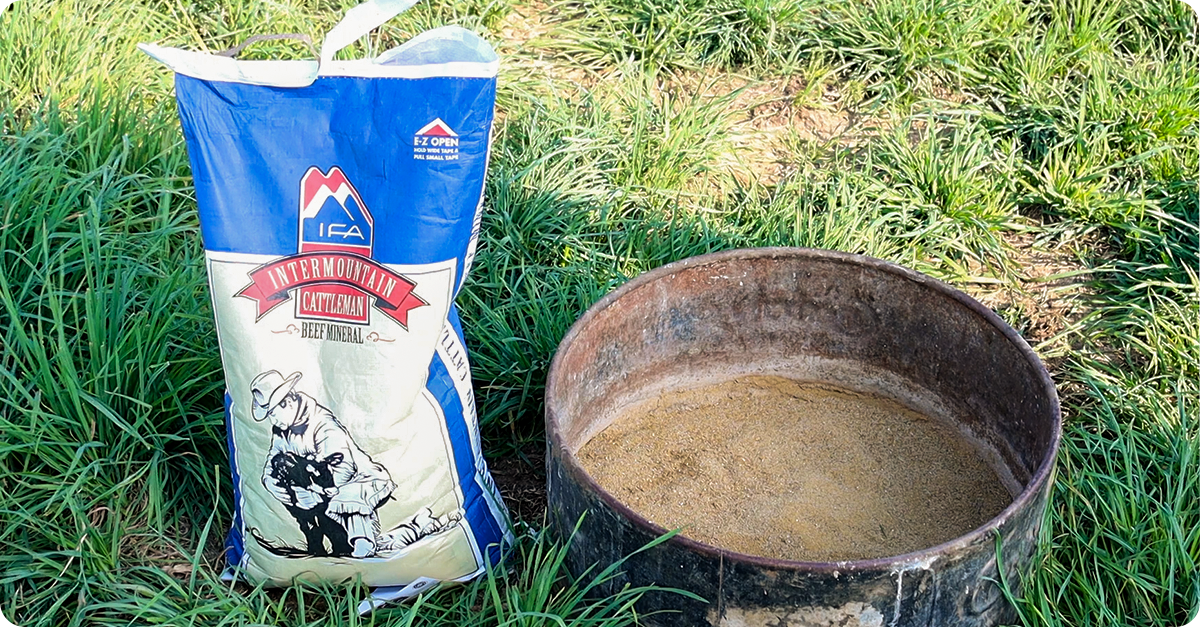
Now that spring has passed us by and we get closer to summer, we begin to think about our green pastures and grazing cattle. It is a good time to evaluate the pastures that your cattle are grazing, and ask yourself, is my pasture supplying all the nutrients necessary to support the required growth for my cattle? It takes more than just energy and protein to ensure optimal health and performance of grass-fed beef cattle.
Not All Grasses Are Equal
It is well accepted throughout the region, native rangeland is deficient in vitamins and minerals, and supplementation under these circumstances is necessary, However, it is important to recognize cattle grazing managed pastures, cereal grains and hay fields, which often include high-quality forages, also require mineral supplementation.

It may be tempting to assume cows or stocker calves grazing tall, lush forages are getting all the nutrients they need. While this might be true for protein and energy, it is unlikely all mineral requirements are being met. Forage quality of plant species changes throughout the year and can be different at the same time of year in different years. These changes are due partly to the growth stage of the plant, soil quality, fertilization methods, and partly to the climate in which the plant has been growing. Available water and soil temperatures are the major factors that affect plant growth and they may also affect forage quality.
During a grazing study at the University of Nebraska, Dr. Jared Judy, an IFA Nutritionist, commented on his findings. “I found that cattle grazing early season pastures often resorted to consuming growth from the previous year. These pastures had green grass available at the start of the grazing cycle but near the middle to end of the rotation in the pasture, cattle often consumed old growth to meet intake demands. This growth is often deficient in key nutrients. Management of rotational grazing is key to its success. Stocking rates and cattle movement are key management components that will tie into the environmental factors that you face.”
Rotational grazing is a management intensive system that concentrates animals within a relatively small area (paddock) for a short period of time. Pastures are divided into multiple paddocks using a temporary fence.

Moving livestock to another paddock before overgrazing allows the forage to recover and resume growth. Animals are moved according to a flexible schedule based on herd size, the amount of land available, quality of forages in the paddock and forage consumption.
Forage Testing
Forage sampling multiple times a year is recommended, corresponding to peak standing crop, mid-summer growth, fall growth and fall dormancy. This will enable you to get a good idea on how your pasture is adding up to the nutrient requirements of your cattle. IFA's feed and nutrition teams can help you with your forage testing and get you the information you need to make good management decisions with your pastured cattle.
Idaho Sampling Example
Jim Sprinkle, PhD, Beef Extension Specialist at the University of Idaho, helps us understand the importance of testing forages:
“In 2016, the University of Idaho extension sampled forage at 35 locations on both irrigated and rangeland pastures across nine counties in Idaho.
“Figure 1 shows the overall results of the forage sampling for Idaho. Minerals circled in purple were considered deficient for at least part of the year.

Note: From “Determine what minerals your cows really need,” by J. Sprinkle, 2017, Progressive Cattleman (https://www.progressivecattle.com/topics/feed-nutrition/determine-what-minerals-your-cows-really-need)
“The trace minerals Selenium (Se), Copper (Cu) and Zinc (Zn) were deficient in both summer and fall for both irrigated and rangeland pasture, as well as the macro minerals Phosphorus (P) and Magnesium (Mg) in the summer and fall on rangeland pasture. Potassium (K) was deficient on rangeland in the fall, and Cobalt (Co) was deficient in the summer for both irrigated and rangeland pastures.
“As expected, sodium (Na) was deficient in both irrigated and rangeland pasture at both sampling times. We also found antagonistic minerals to be present in some locations: Molybdenum (Mo) greater than 2 ppm; Iron (Fe) greater than 400 ppm, which limit copper absorption.
“In most locations across the mountain west, Iron (Fe) does not ever need to be added to the mineral mix beyond what would arise from inclusion of other feed ingredients.”
I always encourage farmers to invest a few dollars in testing their forages so they know the protein, energy and mineral levels in their hay and pastures. At a minimum, you should evaluate forage for the macro minerals Phosphorus (P), Magnesium (Mg), Potassium (K), and Sulfur (S), and for the trace minerals or micro minerals, Copper (Cu), Manganese (Mn), Zinc (Zn) Selenium (Se), Molybdenum (Mo) and Iron (Fe). Always knowing what nutrients are in your feeds allows you as a producer to make better sound decisions on your operation for your cattle.
Beef Mineral Composition
IFA’s Intermountain Cattlemen Beef Mineral (ICBM) Grass-Fed Mineral was developed to complement our new IFA Grass-Fed Beef Pasture Mix. These two mixes work together in complementing each other. IFA’s ICBM Grass-Fed Mineral is an excellent all-around mineral designed for beef cattle on pasture-based and or an all forage diet. Formulated to meet the National Research Council (NRC) recommendations for trace minerals and vitamins, it helps to overcome antagonists in the feed and water, and supports optimal animal health and performance.

The combination of organic and hydroxyl trace minerals is added to this blend to improve mineral absorptions, immune systems and reproductive function. This mineral does not use any grain or grain by-products commonly used in conventional loose mineral supplements.
IFA ICBM Guaranteed Analysis
- Calcium Min 14.50%
- Calcium Max 17.70%
- Phosphorus Min 8.0%
- Salt Min 13.50%
- Salt Max 16.50%
- Magnesium Min 3.0%
- Potassium Min 0.5%
- Copper Min 1520 ppm
- Selenium Min 26 ppm
- Zinc Min 4550 ppm
- Vitamin A Min 300,000 iu/lb.
- Vitamin D Min 20,000 iu/lb.
- Vitamin E Min 790 iu/lb.
This mineral is to be fed free-choice as the only source of supplemental minerals and salt. The desired rate of consumption for mature cattle is 4 ounces per head daily. Providing plenty of fresh, clean water at all times is also essential.
Conclusions
Proper mineral nutrition is vital to herd health, reproductive efficiency, milk production and overall animal performance. Mineral supplementation is not a cut and dried or one-size-fits-all matter. Know the makeup of the forages you are providing and your animal’s nutritional requirements. IFA’s ICBM Grass-Fed Mineral supplies mineral fortification in amounts appropriate for pasture cattle.
Contact an IFA Nutritionist in your area
Written by Dennis Christensen, MS, PAS, IFA Feed & Nutrition, and originally published in the IFA Cooperator magazine (vol. 87, no. 2) Summer 2021.
Dennis Christensen grew up on his family's farm raising corn, alfalfa and wheat before earning his BS in Animal Science and Business Administration and MS in Dairy Science. In 1999 Dennis joined IFA as a sales consultant for dairy and beef cattle growers; eventually becoming a key member of the successful team behind IFA’s growing line of premium bagged feeds for livestock and show animals. Dennis and his wife, Becky, live in northern Utah where they raised their five children; and can often be found camping, hiking or trail riding with family and friends.

